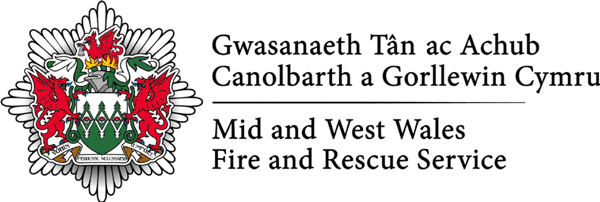Mid and West Wales Fire and Rescue Service is calling on all residents to take extra care when driving this winter. Winter, of all the seasons, requires the most care and attention if you are going to stay safe on the roads.
Winter Road Safety
Mid and West Wales Fire and Rescue Service is calling on all residents to take extra care when driving this winter. Winter, of all the seasons, requires the most care and attention if you are going to stay safe on the roads.
Making simple preparations to your vehicle whilst also considering the current weather and road conditions, planning routes ahead of setting off and adapting your driving style to suit the conditions will all help reduce the risks this winter.
Is your car winter ready?
Here are a few checks that you can do, to make sure your car is ready for bad weather:
- Keep the lights, windows and mirrors clean and free from ice and snow
- Make sure wipers and lights are in good working order
- Add anti-freeze to the radiator and winter additive to the windscreen washer bottles
- Check that tyres have plenty of tread depth and are maintained at the correct pressure
- Pack a snow/ice scraper, de-icer, snow shovel, hat, gloves, boots, a torch, bottle of water and a first aid kit. For longer journeys, you should take blankets, a snack and a flask of warm drink.
- Wash the car frequently to get rid of the salt and dirt that builds up over the winter.
- Always keep a full tank of fuel - you never know when you might get delayed.
- Don't use water to defrost the windows.
Be prepared for bad weather
If you are planning on making a journey, make sure that you are prepared for the weather ahead:
- Check local and national weather forecasts before you set off,
- Listen to local radio for the latest weather and traffic updates,
- Let someone know where you're going and how long the journey should take you,
- Make sure you give your car a winter check before you set off,
- Make sure you charge your mobile, just in case you need to make an emergency call,
- Ask yourself, is your journey necessary?
Driving in winter
If your journey is essential and you have to drive, you can keep yourself and others safe by:
- Slowing down,
- Keeping a greater distance between yourself and the vehicle in front, stopping distances can be longer when the surface of the road is wet, snow covered or icy, increase the 2 second rule to 4 seconds or even more. Visit the Highway Code online for more information on Stopping Distances (opens in a new tab/window),
- Setting aside extra time to make your journey,
- Keep your mobile fully charged, but never use it while driving,
- On colder days be particularly careful country roads, trees and hedges can stop the sun from reaching road surfaces, which may still be icy when all around has thawed.
Driving in icy conditions
Drive extremely carefully when the roads are icy. Avoid sudden actions as these could cause loss of control. According to the Highway Code you should:
- drive at a slow speed in as high a gear as possible; accelerate and brake very gently,
- drive particularly slowly on bends where loss of control is more likely. Brake progressively on the straight before you reach a bend. Having slowed down, steer smoothly round the bend, avoiding sudden actions,
- check your grip on the road surface when there is snow or ice by choosing a safe place to brake gently. If the steering feels unresponsive this may indicate ice and your vehicle losing its grip on the road. When travelling on ice, tyres make virtually no noise.
Driving in snowy conditions
The Highway Code advises, when driving in icy or snowy weather:
- drive with care, even if the roads have been treated,
- keep well back from the road user in front as stopping distances can be ten times greater than on dry roads,
- take care when overtaking vehicles spreading salt or other de-icer, particularly if you are riding a motorcycle or cycle,
- watch out for snowploughs which may throw out snow on either side. Do not overtake them unless the lane you intend to use has been cleared,
- be prepared for the road conditions to change over relatively short distances,
- listen to travel bulletins and take note of variable message signs that may provide information about weather, road and traffic conditions ahead.
What to do if you get stuck behind a gritter
There’ll be plenty of gritter lorries out on the roads this winter – but what should you do if you're the unlucky one that ends up following one?
- Watch out for their orange warning lights, gritters only generally distribute salt when their orange warning lights and ‘spreading’ signs are illuminated. If they aren’t, you’re generally safe to follow them at a normal distance. Be wary that they could begin scattering grit at any time though,
- Give yourself plenty of space, you don't want your car to be sprayed with gritting salt,
- Leave extra room at junctions,
- Don't overtake unless you have plenty of room to do so, make sure you pass quickly and safely, remaining within the speed limits and traffic laws at all times.
Remember the Fatal 5

- Don’t drink / drug drive
- Kill your speed
- Don’t get careless
- Belt up
- Switch it off

